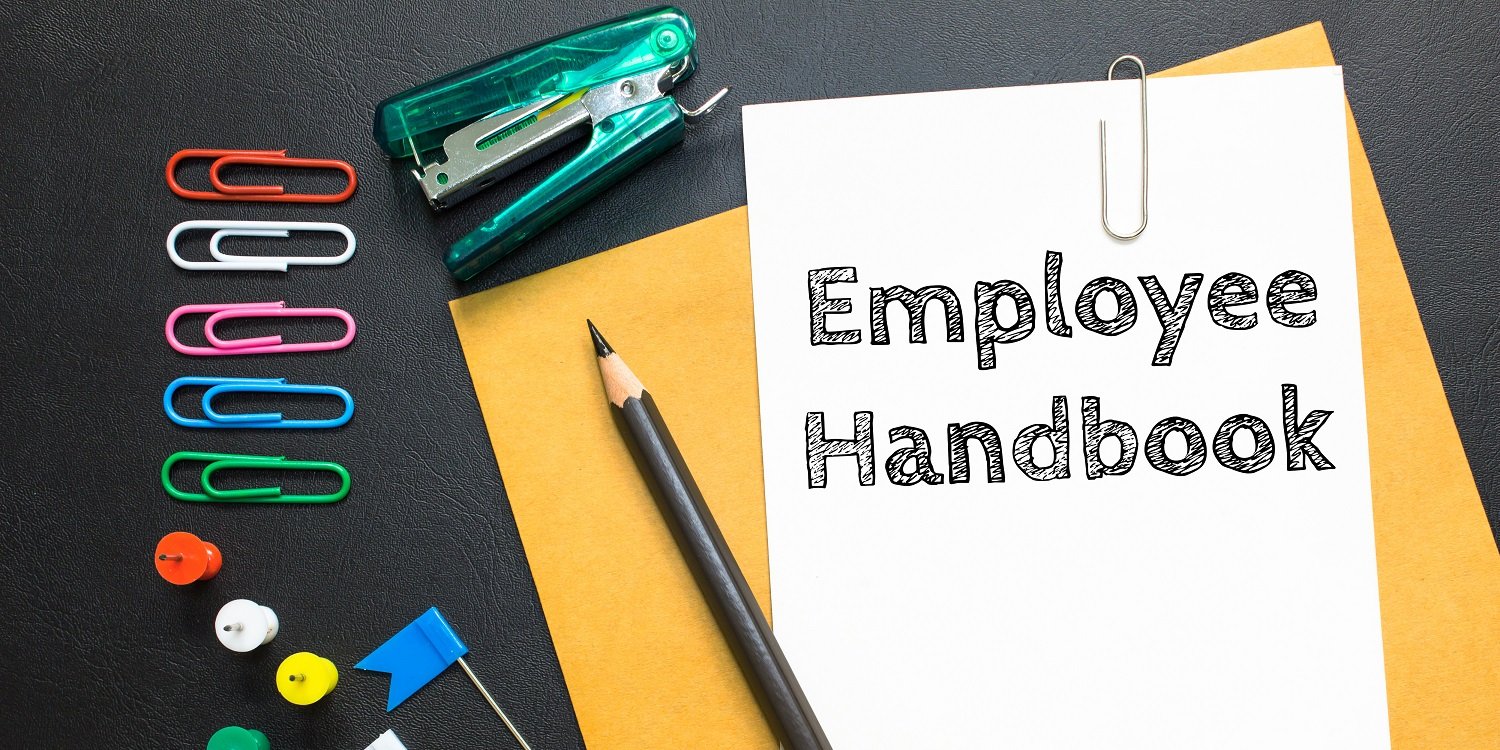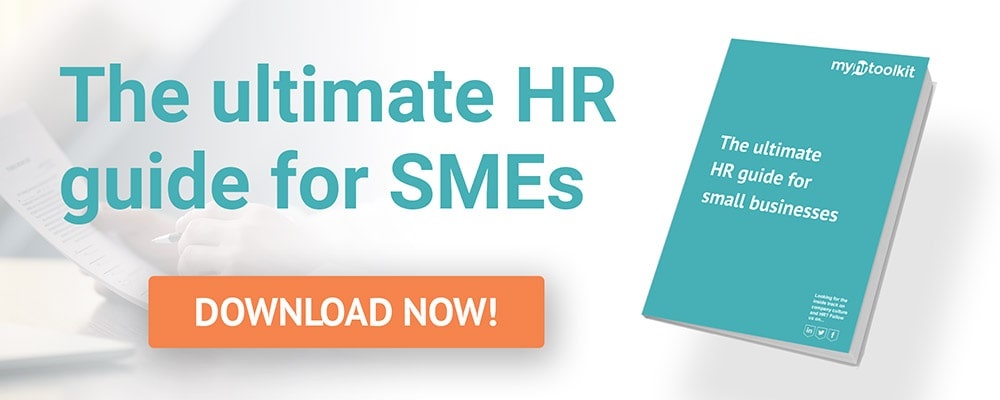Need to write a company handbook or looking to improve it? Learn how to create an engaging and readable handbook for your employees with this guide from HR consultant Archita Misra.
What is an employee handbook?
An employee handbook is a manual that communicates about company policies and procedures to staff members. The handbook clarifies the responsibilities of both employers and employees, provides information about policies and procedures in regard to the functioning of organisation, and communicates about company mission and vision.
Are employers required to provide an employee handbook?

Even though it’s not a legal requirement in UK to provide an employee handbook, it is considered good practice to do so. In fact, there are certain policies which are mandated to be written for compliance and legal reasons.
As per Gusto research published in 2017, 87% of small businesses between 10 to 200 employees provide employee handbooks to their staff members. This raises the question: in spite of the employee handbook not being a legal requirement, why do employers and organisations still prefer to have one? This is mainly because it is equally advantageous for both employees and employers to have an employee handbook.
How handbooks help employees
Employees usually receive the handbook on their first day at work. This helps them to integrate with the company culture by knowing more about the company’s policies and procedures. Some handbooks also provide information regarding the benefits being offered to employees. The handbook also sets expectations and guidelines for employees about the process by which their employer will address any grievances or employment concerns.
How handbooks help employers
Employers find handbooks useful for helping them deal with employment issues consistently and fairly, as per guidance written in the handbook. It also helps in creating a harmonious environment and maintaining transparency in the organisation. A well-written employee handbook can also help protect employers from potential lawsuits and tribunal claims in future. A strong employee handbook provides an outline of company culture, improves the onboarding of new staff, and saves time as many day-to-day employee queries are answered directly by reference to handbook.
How to write a great employee handbook

Before we even write an informative handbook, it is important to know if employees even read the handbook! A survey conducted by Guide Spark suggested that 43% of Millennials and 33% of non-Millennials don’t read their company’s handbook. Some employees don’t even know where to find the handbook in the first place. This makes it more important to not only make the handbook informative but presentable and engaging enough for employees to read it, as well as easy to locate.
Here are 5 tips on how to get your employees engaged with your company handbook:
1. Keep it concise and to the point
What employees usually don’t like about handbooks are that they are bulky and take a long time to read. It is important to keep the handbook simple and easy to understand by all staff.
2. Have an attractive format and style
An attractive presentation might engage employees more to read the handbook. Of course, a handbook is a formal document and needs to cover the essential and lawful information, but making it a stereotypical document straight from a standard template makes it boring and non-engaging. As every organisation is unique in the way it operates, the handbook should reflect the ethos of the organisation and your employer brand.
3.Acknowledge receipt of the handbook
Employers can make employees sign an acknowledgement form as a confirmation of receipt of the handbook. This ensures that the employee is aware of the presence of handbook and its location, and shows the employer that the employee has access to it. If you use HR document management software, there is often the option to ask employees to confirm that they have received and read a document.
Find out how document management software can help your business with disseminating and tracking the HR documents your teams and employees need to ensure efficiency and compliance.
4. Introduce innovative ways to get employees reading
In our current hybrid and off-site working culture and environment, communication is the key to build cohesiveness among staff. Many companies have adopted new ways of encouraging employees to read their handbook. You could conduct monthly/quarterly quiz sessions based on the employee handbook during various staff engagement forums to spread awareness. You could also send a “Know your Company” monthly questionnaire to employees and test their knowledge on company policies – perhaps even with prizes available!
5. Train your managers
Managers usually provide employees the sense of purpose to deliver team and organisational goals. If managers are properly trained and are fully aware of all company policies, they can help encourage team members to read and get themselves familiar with the handbook too.
What to include in your employee handbook?

Though there is no definitive standard on how a handbook is written and what should be covered, a well-written employee handbook might include:
A statement on the company’s vision and culture
This section should provide an overview of your company’s vision and culture. A new employee should be able to gather an understanding of the ethos of the company.
Company policies and procedures, including employment information
This section should include details of the procedures and policies followed in the organisation. This reflects the way organisation functions, how it manages day to day issues, health and safety regulations, and the conditions on which employees work in the organisation.
Anti-harassment and disciplinary policies
It’s important to list any laws related to disciplinary and harassment procedures. This is beneficial both for employers and employees to maintain a consistent and fair environment for all.
Code of Conduct
It’s good practice to list your expectations of their employees in terms of code of conduct – such as your dress code, social media policy etc. This sets the culture of the company for external customers and clients too.
Benefits offered to employees
This is usually one of the most referenced sections in a handbook. It is good to list training opportunities, pension information, and a policy on the benefits being offered to employees in the handbook.
Learn more: What are the advantages of offering employee benefits?
Disclaimer
It is crucial for employers to put a disclaimer note in an employee handbook so that employees don’t treat the handbook as a contractually binding document. This also keeps the option open for employers to make amendments whenever there are changes in laws and working conditions.
Legal requirements to be considered

Even though handbooks are not legally required, employers might need to be mindful of certain legal considerations pertaining to the handbook:
- Employers with more than 5 employees are legally required by law to have a written health and safety policy. Hence, it is important and useful to have a written statement about health and safety procedures in your handbook.
- It is imperative that employers make their employees aware of their employment rights related to parental, anti-discrimination, anti-harassment, and anti-corruption laws to avoid any potential claims. Hence, putting them in the handbook is significant.
- After the introduction of GDPR laws in UK, it will also be good to highlight the initiatives taken by the organisation in order to be GDPR compliant.
- If the handbook is included in the contract of an employment, it becomes contractually binding, hence it is advisable to keep a separate handbook of information on all company policies and procedures. This way employers protect themselves from any potential breach of contract claims.
Read more from the myhrtoolkit blog
Why now is the perfect time for a cultural reset in your business

Written by Archita Misra
Archita Misra is an MCIPD qualified Human Resources professional with more than 12 years' experience in HR operations and strategy across different industries. She has also done an MBA in Human Resources and offers project-based consultancy services for organisations.


 Holiday Planner
Holiday Planner Absence Management
Absence Management Performance Management
Performance Management Staff Management
Staff Management Document Management
Document Management Reporting
Reporting Health and Safety Management
Health and Safety Management Task Management
Task Management Security Centre
Security Centre Self Service
Self Service Mobile
Mobile




